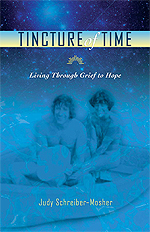Review of Models of Madness:
Psychological, Social and Biological Approaches to Schizophrenia
Australian and New Zealand Journal of Psychiatry
Volume 39 Issue 5 Page 428 - May 2005
doi:10.1111/j.1440-1614.2005.01599.x
Book review by Carolyn Q
John Read, Loren Mosher, Richard Bentall, eds.: Brunner-Routledge, 2004
ISBN 1583919066 pp.400 UK19.99
This is mandatory reading for all psychiatrists. It shakes many of the shibboleths of psychiatry and does so with some sound science. Its purpose is to undermine the biogenetic paradigm of schizophrenia and this end is pursued relentlessly, beginning with a thorough critique of the original Kraeplinian formulation, moving through the twin studies and then the neuroanatomical and neurophysiological evidence.
Having undermined this foundation to the ‘schizophrenia is a brain disease and it’s in your genes and you need medication for life’ approach, the editors then address the positive data for the psychosocial factors. Again a very convincing broadside is fired at received wisdoms, such as that prevalence is the same across cultures and supports the theory that schizophrenia is a medical condition. In particular I liked the parody of social drift theory ‘schizophrenics don’t become Irish’. The data on child abuse and its association with schizophrenia is thoroughly compiled in a convincing array.
The weakness of the thesis comes with the data on psychological remedies but although the editors don’t grapple with this I think this deficit is explained by the thesis itself: If schizophrenia is not a valid diagnostic entity, then reviewing treatment outcomes could not yield useful information because there may be several different disturbances subsumed under that rubric. The authors do present good data to suggest that the three symptoms groups, delusions and hallucinations, thought disorder and negative symptoms have no particular association with each other, so treatment outcomes are unlikely to make sense unless these groups are dealt with separately. Indeed this is suggested by the fact that cognitive therapy makes delusions and hallucinations better but negative symptoms worse.
The editors undoubtedly have a selective bias in terms of the data they have critiqued but that is hardly new in this particular field and compared to the selective filter through which mainstream psychiatric research is promulgated, it is hardly an issue. For the ‘schizophrenia is a brain disease’ theorists and the ‘it’s in your genes, families are blameless and it has nothing to do with childhood experience’ theorists: read this book and re-examine your tenets.
Read et al. have issued a serious challenge to psychiatry. Are we totally on the wrong track with both understanding and treating schizophrenia? Are we doing more to create mental disorder than to prevent it? Since we have shuffled off responsibility for almost everything except mental illness, this challenge to the medical model suggests that we may have sawn off the last branch on which we had any purchase.
